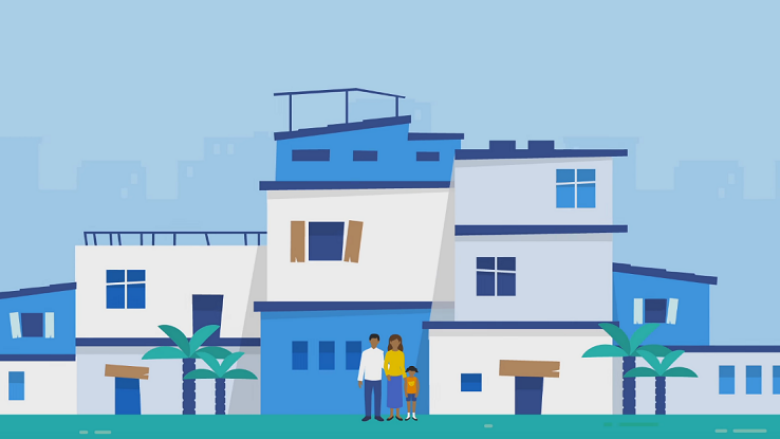With a greater concentration of people and assets in urban areas, cities need to address an increasingly complex range of shocks and stresses to safeguard development gains and accelerate poverty reduction.
Managing disaster risk and the impacts of climate change have long been an important focus of urban resilience. But recent examples show how economic crises, health epidemics, and uncontrolled urbanization can also affect the ability of a city to sustain growth and provide services for its citizens – underscoring the need for a new approach to resilient urban development.
The World Bank’s growing investment in disaster risk management reflects this conceptual shift. The Bank’s work on urban resilience aims to help cities adapt to a greater variety of changing conditions and withstand shocks while maintaining essential functions.
Ongoing activities under in this area, which is supported by the Global Facility for Disaster Reduction and Recovery (GFDRR), include:
For many major cities in the world, strengthening urban resilience is a multibillion dollar agenda that requires strong partnerships and new sources of capital. Cities are sometimes held back from pursuing the necessary investments because they lack the technical expertise and/or the access to capital to finance them.
Established in June 2017, the World Bank Group’s City Resilience Program (CRP) empowers cities to pursue investments that build greater resilience to climate and disaster risks, and to access the financing necessary to ensure those investments come to fruition.
The approach used by the CRP represents a fundamental shift in how cities can be supported to tackle their most pressing development challenges – from one focused on sectoral priorities to one focused on integrated and spatially informed priorities, which capture the interplay between the natural and built environment. To date, this program has engaged more than 90 cities around the world on developing investment programs that could be financed with a range of financial instruments.
- A rapid diagnostic methodology to help cities improve their understanding of risk and the performance of urban systems, as well as to identify priority actions and investments that will enhance the city’s resilience.
- The first diagnostics under the new methodology were conducted in Can Tho, Vietnam in June 2014 and Addis Ababa, Ethiopia in July 2015. Additional diagnostics are planned, including Lahore, Pakistan in late 2015.The CityStrength Diagnostic has been implemented in 28 local governments. It was first piloted in two cities – Can Tho, Vietnam and Addis Ababa, Ethiopia – which provided two very different contexts for assessing the benefits of the process. The CityStrength Diagnostic was then implemented at the metropolitan level in 16 municipalities that make up the Greater Accra Region in Ghana, as well as in nine regional capitals and a charter city in Ethiopia.
Financing Resilience
- Innovative financing mechanisms to support investment in resilient infrastructure are being developed working with the private sector and other development partners.
- A methodology to mainstream Low-Carbon & Resilient Capital Investment Planning in cities is being developed, and training is being provided for cities participating in City Creditworthiness Academies.
Medellin Collaboration on Urban Resilience
- Nine institutions, including the World Bank, announced a global collaboration at the World Urban Forum in Medellin, Colombia, in April 2014 expressing their collective commitment to help cities improve resilience.
- The collaboration aims to facilitate the flow of knowledge and financial resources necessary to help cities become more resilient to disruptions related to climate change, disasters caused by natural hazards, and other systemic shocks and stresses, including the socio-economic challenges associated with rapid urbanization.
Primary objectives include:
- Fostering harmonization of the approaches and tools available to help cities assess their strengths, vulnerabilities, and exposure to a multitude of natural and manmade threats in order to build their resilience;
- Catalyzing access to existing and innovative finance mechanisms, including risk-based instruments, to reduce exposure and vulnerability to shocks and increase cities’ adaptive capacity; and
- Supporting capacity development of cities to achieve their goals by facilitating direct sharing of best practice and knowledge enhancement.
Last Updated: Oct 07,2019

